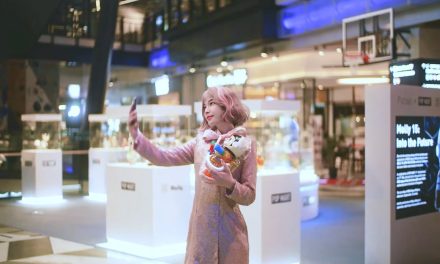Wine brand innovates with phygital retail marketing that directly addresses gaps in wine-shoppers’ consumer journey.
In reimagining a post-pandemic future of in-store display marketing, brands will do well to encourage consumers’ self-exploration of their offerings – instinctively filling information gaps for wine shoppers, and providing meaningful contact points for consumer engagement, even without the aid of a promoter.
In October 2021, Penfolds, a brand under Treasury Wine Estates, launched its first phygital in-store marketing displays, which skillfully blend physical retail elements with digital technology.
The Australian wine brand seeks to elevate shoppers’ experience through the introduction of scent dispensers, where distinct Penfolds wine aromas are dispensed onto scent strips to allow consumers to gauge their wine profiles outside of tasting samples, which is helpful in informing shoppers’ decision-making. A digital screen will simultaneously be prompted to screen a video showcasing the aroma notes in the scent dispensed, educating consumers on what they are smelling.
To learn more about this company’s innovative marketing initiatives, we spoke to Yodissen Mootoosamy, General Manager at Penfolds International (South East Asia, Japan, Korea, Europe, Middle East & Africa).

How is marketing wine different from marketing other consumer products?
Penfolds approaches our consumer marketing based on research insights to better understand our target shopper’s interest and needs for wine at different touchpoints in the brand and purchase experience. For the retail channel, especially in supermarkets where shoppers are inundated with information competing for attention, we know that brand awareness as well as instant access to easy-to-understand information that can assist them in making decisions to select the right wine for themselves is crucial to driving purchase. Hence, we’ve developed this series of physical experiences too – supported by ongoing efforts in brand building and engagements with Penfolds consumers.
Did the pandemic affect the marketing of products like wine?
The pandemic has indeed changed shopper behaviour and marketing. With online shopping and mobile orders becoming even more popular than before, brands and retail must adapt to meeting the online and offline needs of consumers. Tech-enabled tools that bridge the physical and digital experience for shoppers offer a total Penfolds engagement for consumers to better understand our wines and to assist them in choosing the best matches for their palate.
How does your company leverage technology to market your products?
Technology-driven tools and campaigns are not new to wine marketing for Penfolds or Treasury Wine Estates (TWE). We are actually the first wine company to introduce Augmented Reality (AR) technology on wine labels. TWE’s innovation in this space commenced with the launch of an AR app designed for the 19 Crimes brand in the US in 2017, featuring British rogue characters on the label coming to life to tell their story. The concept involves users simply downloading the app from the Apple or Google store and hovering their smartphone over the wine label to bring it to life.
How do you use martech (marketing technologies) to bolster your brand/business?
Our latest Penfolds experience launching in Singapore is a great example of martech activations to grow our brand and business.
Your thoughts on live commerce, social commerce and other new modes of commerce?
The possibilities are endless for live and social commerce. Penfolds has already observed and have been adapting to some of these trends in different markets around the world – such as the use of livestream events to promote and sell wines in different markets during the last few years. Every market is different and consumers are ever-evolving. We are keen to stay on top of the trends and continue to drive and leverage new opportunities.


















